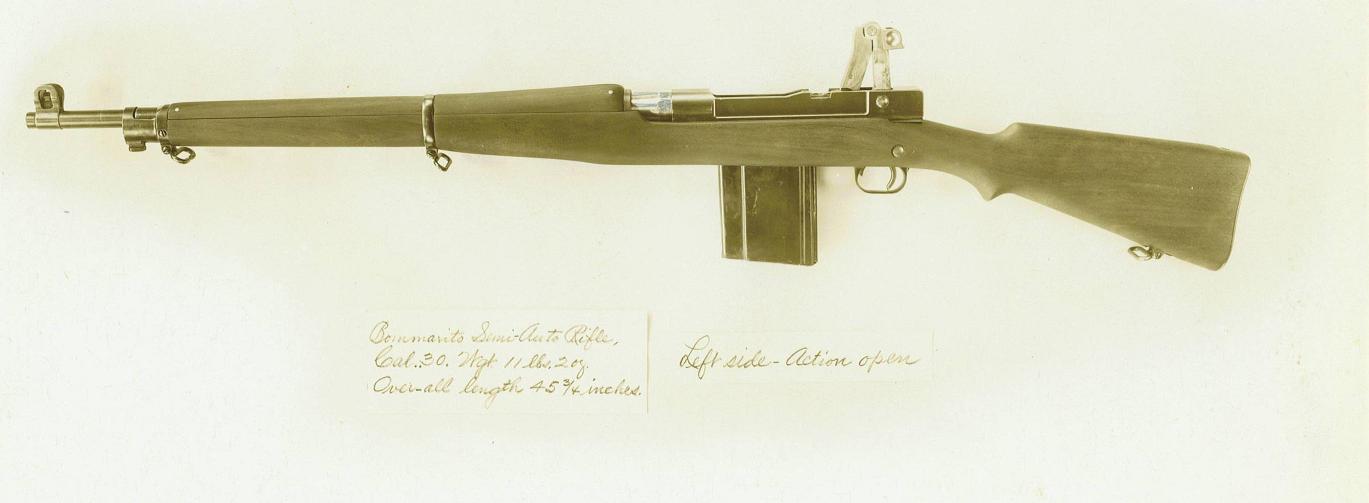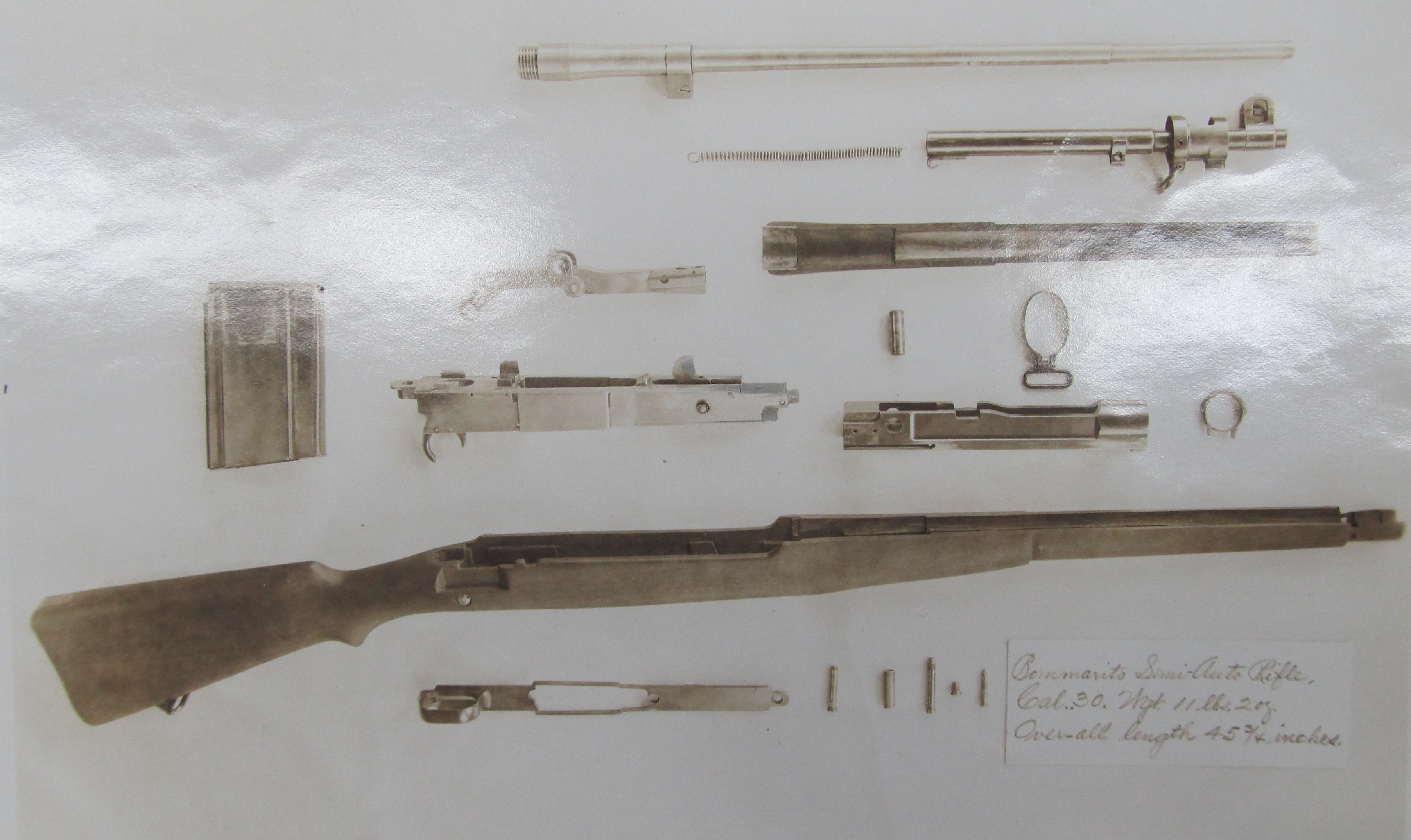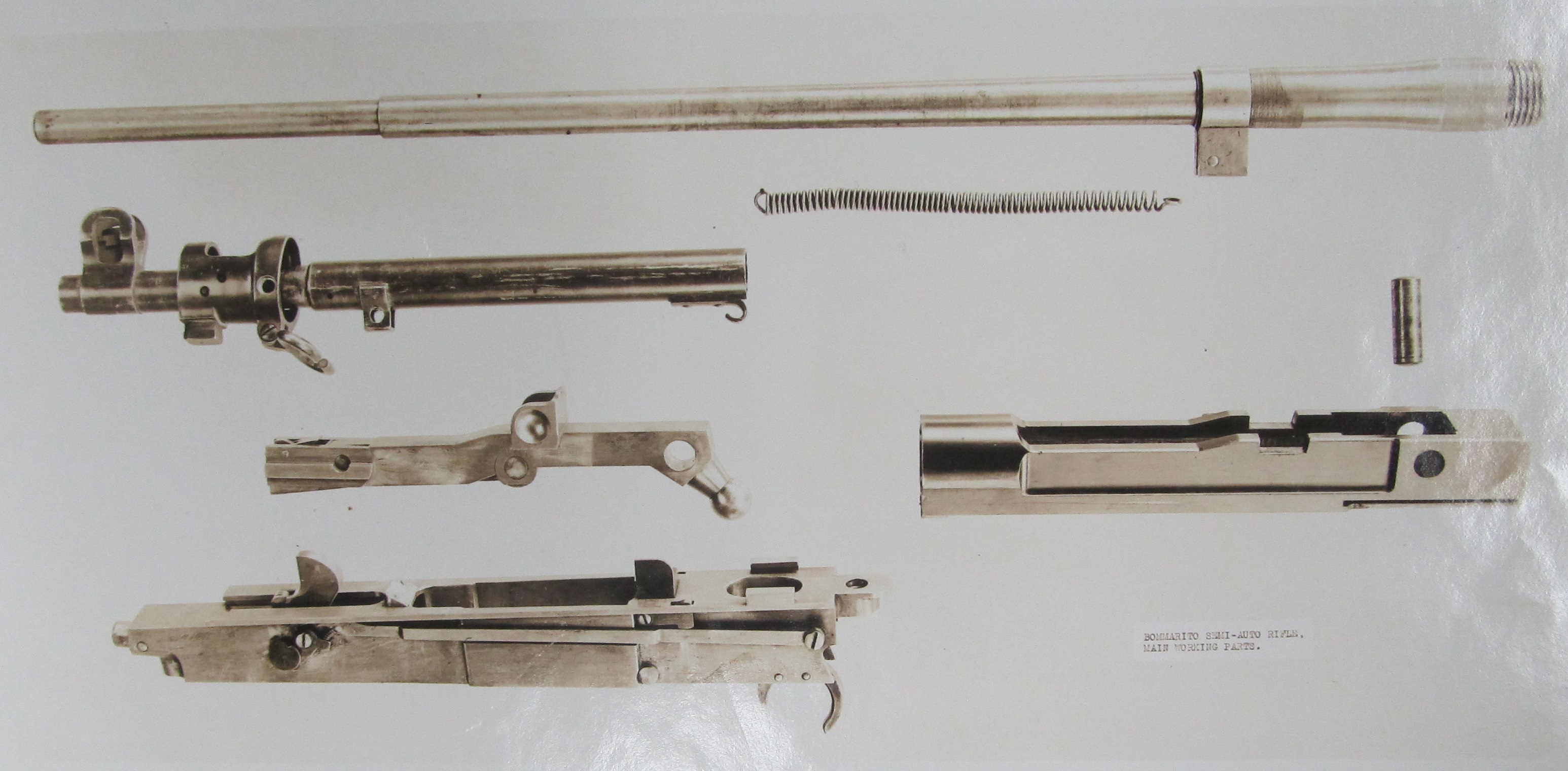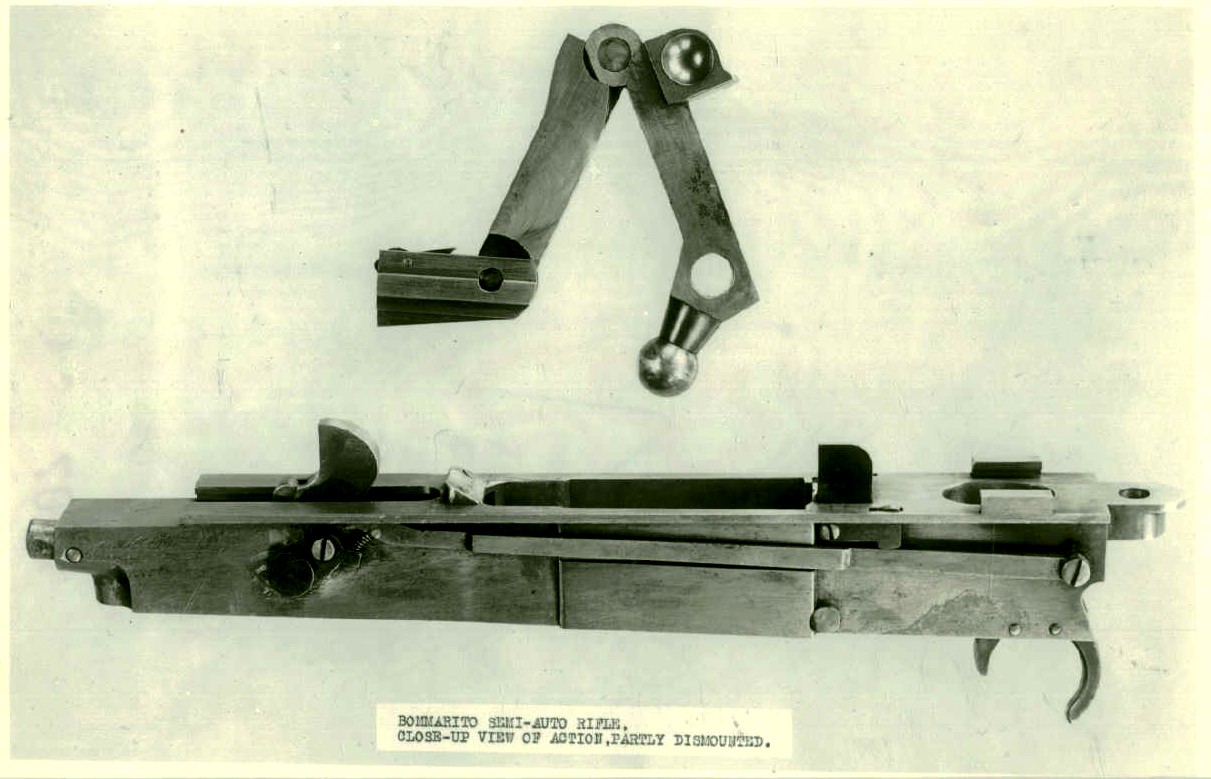The Bommarito was one of the prototype self-loading rifles presented to the US Ordnance Department during the early 1900s. It was chambered for the standard .30-06 cartridge, fed from 20-round detachable box magazines, and was invented by a man named Giuseppe Bommarito. On April 5th, 1918 the War Department allocated $2500 for its development, followed by an additional $2000 on September 28th, 1918. The investment didn’t produce a useful result, as the results of extensive testing were “unfavorable”. Its principle operating problem, apparently, was a habit of failures to extract, with a subsequent problem of the action very difficult to open manually with a stuck case in the chamber. The design was tinkered with by Major Elder (who also worked with the Rychiger rifle), but without any ultimate success.


The design used a short-recoil toggle lock similar to the Luger, with a recoil distance of 1.25 inches. This is a bit unusual – much longer than most short recoil designs, but not long enough to be a long-recoil system (which requires the locked recoil distance to be equal to or greater than the length of the cartridge). Because of this long recoil distance of the barrel and the size of the toggle lock arms, it was found to be a very awkward weapon to use, and liable to injure shooters’ fingers during handling.
Thanks to Miles Vining, we have a few new photos of the Bommarito tested by the Ordnance Department:



These photos make it clear how the rifle actually worked. Note how the front sight is mounted on what is actually just a barrel sleeve locked into the stock. The barrel itself travels inside that sleeve, which probably would have had adverse consequences for accuracy had the rifle progressed far enough for accuracy to be a consideration. The small diameter coil spring connects the moving barrel to the front barrel sleeve (note the small hook at the rear of the sleeve), providing the force to pull the barrel forward after each shot. This sleeve also allows the rifle to retain the look of a fixed-barrel weapon, since the moving barrel and extension are hidden under the handguard. In theory, that should also aid reliability by shielding the mechanism from ingress of dirt.
The toggle lock uses the ball at one end as a pivot point. It is set in a socket in the receiver, while its lugs lock into the square cuts in the barrel extension. The ball remains in its socket as the barrel and barrel extension move backward, which forces the toggle joint to break, and after enough travel the locking lugs disengage and the barrel is pulled forward by its return spring while toggle continues to open, to eject the empty cartridge case.
Unlike the Luger pistol and Pedersen rifle, the Bommarito version of the toggle lock appears to be relatively simple to manufacture. That is something of an accomplishment, but it doesn’t really help if the finished product isn’t practical to use…

Are any of these still around anywhere? For sale anywhere? I would love to own one, looks like a nice rifle, and it bears my last name!
I’ve not seen one in person anywhere, much less for sale – sorry.
Major Elder was a designer and superintendent at Stevens Arms. The rank was merely a wartime formality. I believe his full name was Edward Howard Elder, as there are multiple patents for Edward H. Elder assigned to Stevens. However, a 1918 vintage issue of the “American Machinist” mentions Major Howard H. Elder at Stevens. Perhaps this was a bit of confusion on their part. Beside the Bommarito and Rychiger, Elder also converted the St. Etienne rifle to .30-06 for Ordnance testing.
That makes a lot of sense – thanks for the info!
Seems to be a trend of toggle lock rifles that were used in the U.S. trials.
I’d just like to know if I am correct but, I have seen on one photo which is a closeup of the toggle where I could see that on that middle point of the toggle I could just see a small glimpse of the rear sight so that meant it kinda worked like a lugers toggle? where the rear sight moves along with the toggle